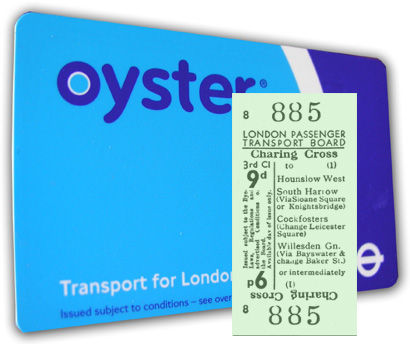UNIFIED transport in London reached its 80th anniversary on 1 July. The London Passenger Transport Board took over from privately-owned rail and road operators on 1 July 1933, when the Underground was significantly smaller than it is now but the capital still had a complex tram network.
Another anniversary occurred on 30 June, when the Oyster smartcard celebrated its tenth birthday.
Transport in London was unified in 1933 but not nationalised. It had issued interest-bearing stock to compensate the individual operators whose businesses had been absorbed into London Transport. Only the main line railways and taxis remained outside LT's public transport remit.
Nationalisation followed on 1 January 1948, when the LPTB became the London Transport Executive, part of the British Transport Commission.
By now many of the trams had gone and Underground extensions had been built, but some modernisation had been delayed by the war.
The LTE changed again into a Board directly answerable to the Minister of Transport at the start of 1963, but evolved into a second-generation London Transport Executive on 1 January 1970, run by the Greater London Council.
Bitter fares wars followed, as GLC leader Ken Livingstone's fare cuts were resisted by some of the outer London boroughs, one of which achieved victory in a famous House of Lords ruling.
In spite of the political strife, the main part of the Victoria Line was opened in 1969, and another new line – the Jubilee – followed ten years later. In 1999 this was extended from central London eastwards to Docklands and Stratford.
When the Greater London Council ceased to exist, LT was dubbed London Regional Transport in 1985, but more ambitious plans for reforming London local government meant that a new organisation, to be known as Transport for London, was created at the end of the 1990s, to be controlled by the new executive Mayor and monitored by the London Assembly.
A fresh controversy over public-private partnerships intended to involve the private sector in Underground maintenance and renewals delayed the handover of the Underground to TfL, because the new Mayor Ken Livingstone was opposed to them. However, once the contracts had been signed the last of the transfers took place, and London Regional Transport was wound up on 15 July 2003. Both the PPP contracts later failed, and are now once again part of the core Underground.
Transport for London has a wider bnef than any of its predecessors, being responsible for the Underground, Overground, Docklands Light Railway, trams, buses, taxis, streets, river services, Victoria coach station, bicycle hire and most recently a cable car across the Thames.
The government has just announced that some West Anglia National Rail routes are to be devolved to TfL by the end of 2015, when the first trains operated by the new Crossrail concession-holder are due to start running on the line between Liverpool Street and Shenfield. The rest of Crossrail, which will also be a TfL service, is scheduled to open in 2018 and 2019, while £2 million has just been provided by the government to fund the first planning stage of Crossrail 2.
In the ten years since Oyster smartcards were launched on 30 June 2003, around 60 million cards have been issued and over 85 percent of all rail and bus travel in London is paid for using the cards.


